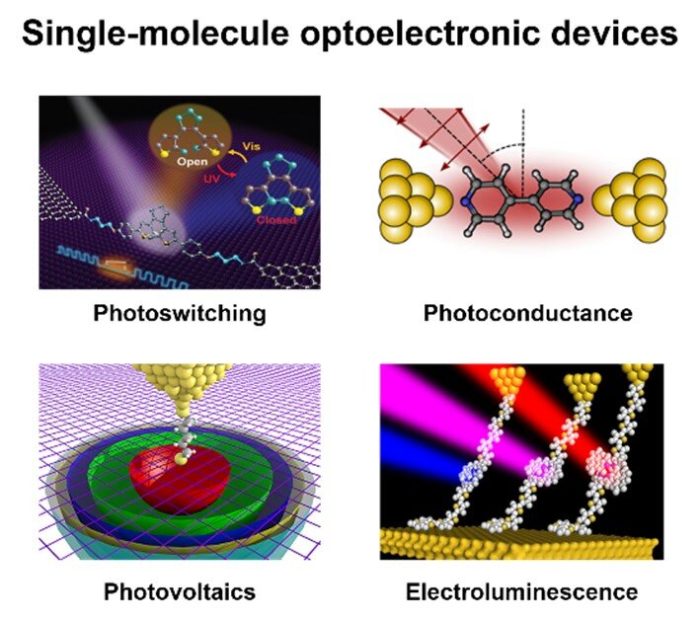Single-molecule electronic devices, which use single molecules or molecular monolayers as their conductive channels, offer a new strategy to resolve the miniaturization and functionalization bottlenecks encountered by traditional semiconductor electronic devices. These devices have many inherent advantages, including adjustable electronic characteristics, ease of availability, functional diversity, and so on.
To date, single-molecule devices with a variety of functions have been realized, including diodes, field-effect devices, and optoelectronic devices. In addition to their important applications in the field of functional devices, single-molecule devices also provide a unique platform to explore the intrinsic properties of matters at the single-molecule level.
Regulating the electrical properties of single-molecule devices is still a key step to further advancing the development of molecular electronics. To effectively adjust the molecular properties of the device, it is necessary to clarify the interactions between electron transport in single-molecule devices and external fields, such as external temperature, magnetic field, electric field, and light field. Among these fields, the use of light to adjust the electronic properties of single-molecule devices is one of the most important fields, known as “single-molecule optoelectronics.”
This interaction not only refers to the influence of light on the electrical properties of molecular devices, that is, the use of light to control the charge transport through the molecules, but also refers to the luminescence originating from the molecules during the charge transfer process. Understanding the photoelectric interaction mechanism in single-molecule devices is of great significance to the development of single-molecule optoelectronics.
The research groups of Prof. Xuefeng Guo, Prof. Chuancheng Jia, and Prof. Dong Xiang from the Center of Single-Molecule Sciences of Nankai University review the physical mechanism and beyond in single-molecule optoelectronic devices. Single-molecule optoelectronic devices are of great significance because they not only provide new strategies for solving the bottleneck of miniaturization and functionalization of traditional semiconductor electronic devices, but also help to explore the intrinsic properties of molecules at the single-molecule level. Controlling the electrical properties of single-molecule devices is still the key to further advancing the development of molecular electronics.
Therefore, it is important to clarify the interaction between charge transport in the devices and external fields, especially light. In this review published in Opto-Electronic Advances, the optoelectronic effects involved in single-molecule devices are summarized, including photoisomerization switching, photoconductance, plasmon-induced excitation, photovoltaics, and electroluminescence. In addition, the mechanisms of single-molecule optoelectronic devices are elaborated, especially the processes of photoisomerization, photoexcitation, and photo-assisted tunneling. Finally, the opportunities and challenges arising from the research of single-molecule optoelectronics are briefly introduced, and further breakthroughs in this field are proposed. This review will be helpful to readers who are engaged in research related to optoelectronic, photonics, organic electronics, molecular electronics, etc.






